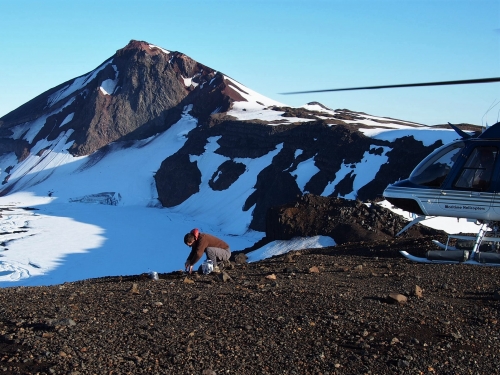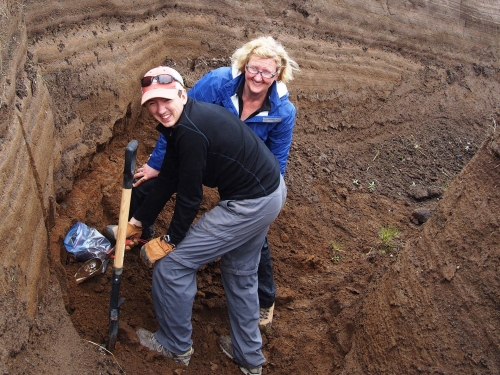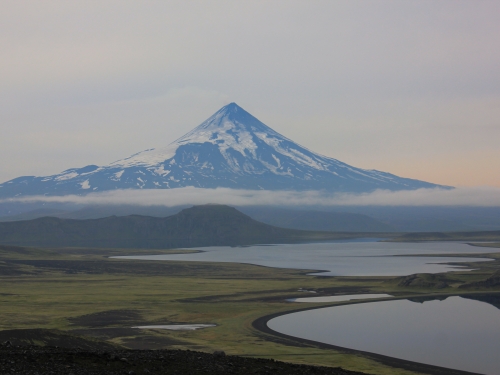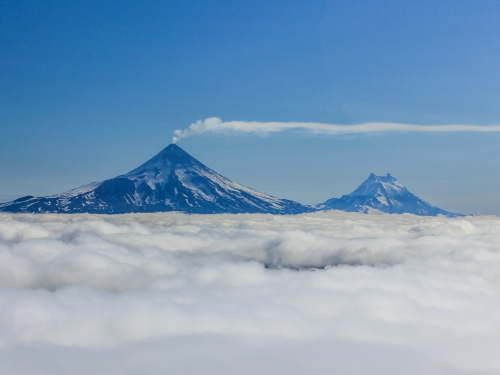
Geophysicist Diana Roman of the Carnegie Institution for Science on the flank of Cleveland Volcano in 2016. Tana Volcano, composed of several peaks in this image, is in the background. Tana Volcano is less active than some of the other studied volcanoes, which is part of the reason it does not have the standard conical shape commonly seen at highly active volcanoes such as Shishaldin and Cleveland. Roman was dropped off near this location by helicopter, carrying emergency supplies that included everything necessary to survive for a few days in the Aleutians. These supplies are necessary to have in the field because the weather can change quickly, and if this occurs, the helicopter may not be able to safely land to retrieve field teams; however, the pilot was able to successfully retrieve all members of the team without incident during the team’s expeditions.
A new study, published today, March 10, in the journal Science, finds that, for the world’s most common type of volcano, magma with higher water content tends to be stored deeper in the Earth’s crust. The finding identifies what some scientists expect is the most important factor controlling the depth at which magma is stored and may bring experts one step closer to accurately forecasting volcanic eruptions.
SI-98-2022





